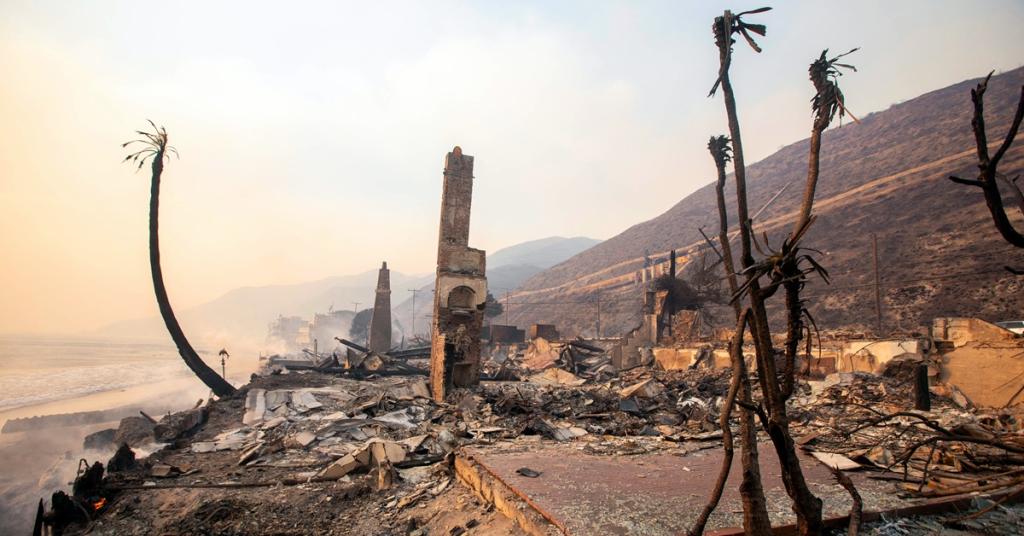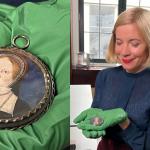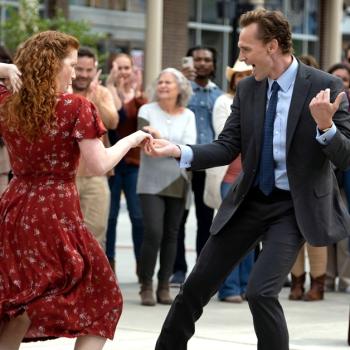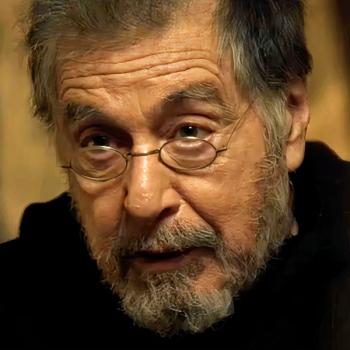 The Palisades Fire burns fiercely during a powerful windstorm, spreading devastation across the west side of Los Angeles, California.
The Palisades Fire burns fiercely during a powerful windstorm, spreading devastation across the west side of Los Angeles, California.
It’s an inevitable and sometimes painful fact that, no matter how big the disaster, life goes on. The media moves on. The January 2025 fires in Los Angeles County are no exception … with one difference.
These fires happened in a town absolutely awash in professional media of all kinds.
But that’s not it.
Instead, future historians of this era may turn as much to YouTube.
Palisades Fire and Eaton Fire: What and Where Burned
Let’s recap what happened starting Jan. 7, when winds up to hurricane force whipped brush fires into raging infernos in several areas. The worst hit were the foothills town of Altadena, on the eastern side of the Los Angeles basin, and Pacific Palisades/Malibu on the western edge, bordering the ocean.
And, for those outside of the L.A. area wondering what started the fires — there’s been no official determination yet, but I about guarantee you the cause was human.
I can’t remember a time when one of L.A.’s frequent blazes wasn’t caused by a campfire, car fire, fireworks, electrical something, arson, etc. Suspect both fires will ultimately be linked to human activity or equipment of some kind.
Lightning is not much of a thing here.
Here’s a time lapse:
Of the two fires, the Palisades Fire was the largest in terms of land, burning just under 25,000 acres. The one in Altadena, designated the Eaton Fire, burned about 14,000.
According to the Los Angeles Times (the link includes maps), the Eaton Fire destroyed 9,400 structures, while 6,800 burned in the Palisades Fire (a larger but less densely populated area). These burned structures included mostly homes, but also churches, schools and businesses.
The firestorm consumed large swaths, but left some structures intact, in a way that seems almost cruelly random.
UPDATE 3/20/2025: Here’s a new documentary from PBS Terra on how the fires spread so quickly and were so devastating, and what communities and homeowners can do about that:
BTW, a Small Catholic Miracle in the Palisades Fire
Although Corpus Christi Catholic Church in Pacific Palisades burned, the tabernacle in it survived. The priests have found refuge at St. Monica Catholic Church in Santa Monica, and the community struggles to stay together.
Corpus Christi parishioners are attending special Masses at churches around the area, including, last weekend, Good Shepherd Catholic Church in Beverly Hills.
The Staggering Aftermath
It’s a near-paralyzing task to wrap one’s mind around the issues of housing those displaced — about 150,000 people in a city that already lacks adequate or affordable housing — sorting out insurance (if you had it), figuring out schools and medical care, or even just getting clothes and shoes.
And, it must always be remembered, that while the celebrity mansions and luxe coastal houses destroyed get the most attention, the victims of the fires cover all economic levels, from working class to super-rich.
(And there’s a huge impact on L.A.’s entertainment industry, as I chronicled earlier.)
The effect mushrooms to include hardship on the merely evacuated (who won’t get insurance payouts to cover the cost of hotels, etc.), and anyone whose job depended on the vanished businesses and displaced people.
Even those that still have a house standing likely are still displaced, because of power outages, lack of water, concerns about toxins, etc.
That’s not even to mention the cleanup and challenges of rebuilding, which will no doubt go on for years.
But Let’s Mention the Cleanup and Rebuilding
For the bulk of the L.A. area, life goes as normal. The Oscars took place as usual in Hollywood, and the news has turned to politics and sports and other things.
But the cost of the Palisades and Eaton Fires — estimated at $164 billion — will have long-range effects on the budgets of the city, county and state, and the federal government.
The ultimate impact on insurance prices statewide and nationwide, or even the survival of some insurance companies, is yet to be determined.
On top of that is the subsequent damage from later mudslides, as Los Angeles’ annual rains finally showed up.
Making it even harder to visualize all this is that, for the most part, few people are allowed in the burn areas. Roads are closed to almost all but residents, workers and press, monitored by police and National Guard.
Both burn areas are in landscapes with steep hills and deep canyons, often with a single road in and out. This made the fires hard to fight, and complicates everything afterward — but it also limits the public’s ability to see what’s there.
But …
YouTube Offers a Window Into the Devastation — But Not All of It
Let me say up front that finding a YouTube look into the Eaton Fire is much harder than the Palisades Fire.
Why is this? Here are my guesses.
For one, Altadena is not full of famous people, so, frankly, the major media is inherently less interested. And, it’s not a part of the city of Los Angeles. Instead, it’s an unincorporated part of L.A. County, so it’s not caught up in any of the highly publicized controversies surrounding the L.A. Fire Department and the L.A. mayor.
Also, it’s one of those communities that you probably would not visit unless you lived there, knew someone there, or had a particular reason to go (I’ve been once, to visit a TV-show shoot at a cemetery). Tucked up into the foothills east of Pasadena, it’s just not a tourist area, so it’s more of a private community.
The same could be said of Pacific Palisades. I’ve driven through there several times but seldom had any reason to stop. I went to Mass at Corpus Christi once, and that may be the only time, other than perhaps getting gas. It’s, again, not a tourist area — but it is, was, full of famous people.
But, Malibu IS a tourist area, and an iconic symbol of the surf-and-sun Los Angeles lifestyle. It has relatively few residents but millions of visitors. In a way, Malibu belongs to us all.
Also, it may be as well that more YouTubers are active on the western side of L.A., home to a lot of old and new media and content creators.
And aerial photography is easier (and honestly, more spectacular-looking), when you can sweep along the coast.
So, much of the Altadena footage is from news sources, like the L.A. Times:
And some deeply personal accounts:
My Favorite Palisades/Malibu YouTubers Chronicling the L.A. Fires:
Here are three YouTubers that offer a fascinating, sobering and valuable glimpse into Palisades Fire burn areas. No doubt there are more, but these are my favorites and daily go-tos.
In the days, months and years to come, they may provide a vital piece of the historic record.
Santa Monica Closeup
From the channel description:
Fabian Lewkowicz, an award-winning accredited photojournalist and press photographer based in Santa Monica, is renowned for his captivating imagery and storytelling. As the creator of Santa Monica Closeup, he draws on years of experience with local media outlets like the Santa Monica Daily Press and The Corsair to capture iconic moments in the city’s history.
Armed with a camera and a press pass, mounted mostly on an e-bike, Lewkowicz and his camera have extensively toured both the Palisades and the Pacific Coast Highway (PCH) in Malibu. He chats occasionally with workmen or other folks, but in general, commentary is minimal.
His videos, shot on an almost daily basis, track the damage and the (painfully slow) efforts to deal with it.
Here’s one from Jan. 12:
And one from March 12:
Shacked
The “Los Angeles Surf Mag” has been doing much the same thing.
Here’s a Feb. 22 trip down iconic Sunset Boulevard (one of the main ways to get into Palisades, along with the PCH, both of which have very limited access):
And a short one from March 8, focusing on the effects of debris and ash on the ocean and beaches:
Cameron Desborough
A young truck driver and a YouTube newcomer, Desborough has, of this writing, only published 49 videos — but I’m impressed.
He’s a regular guy, delivering things like gravel and sandbags to various work sites around the Palisades Fire areas. He usually just sets up his phone to record the road in front of him as he drives.
What’s different about Desborough’s videos is that he adds a running commentary. He’s not a pundit or a professional journalist, he’s just a Southern California native who has careful, thoughtful opinions on economics and other areas (and some interesting personal stories).
And, because he’s doing a job connected to the recovery efforts, Desborough sometimes goes to places that other YouTubers can’t. Below, he drives the still-closed Topanga Canyon road, that runs from the west Valley down to the sea.
I know he survived, because he posted the video on March 5, but it got a bit hairy (and knowing how beautiful the Topanga Canyon drive used to be, it was also very sad):
Also, this one from Feb. 26, is a little nerve-wracking, as he climbs one of the hillside roads off the PCH:
I enjoy Desborough’s thoughts, but watching this one today was a different experience. Out of his truck and on foot, it was just the gut reaction of an ordinary person, walking through what used to be a neighborhood.
UPDATE 4/6/2025: Adam Carolla
Comic figure turned political commentator Adam Carolla has a condo in Malibu, which survived. But as a resident, this means he can enter the burn areas. Also, he has a background in construction, so he has a unique perspective on what he sees.
By happenstance, in one episode of his video blog, Carolla spoke to a private contractor clearing a lot on the Pacific Coast Highway. Then, probably as a result of that, he got a ride-along and interview with a representative of the Army Corps of Engineers, the government alternative to clear rubble, which is full of useful and fascinating information.
I wish I’d seen this info on the news, but thanks to Carolla for including it. Whether you like his politics or not, he’s doing a useful service here, in an informed (and entertaining) way — but be warned that bad language may pop up. There are more videos, but here’s the Army Corps one …
(The link above, here it is again, is just to the playlist of the video blog).
It’s the L.A. Fires, But Disaster Happens Everywhere
Of course, there have been, and will be, many disasters in America. The aftermath of Hurricane Helene in late September 2024, especially in western North Carolina, is still a scandal, as you can see below. But seldom do we get a regular look into what comes next.
No matter where you live, fire, flood, earthquake, tornado, whatever, may strike. As bad as that is, the aftermath can be equally nightmarish. The more we see and understand, the more we can prepare.
Image: Shutterstock
Don’t miss a thing: Subscribe to all that I write at Authory.com/KateOHare
















